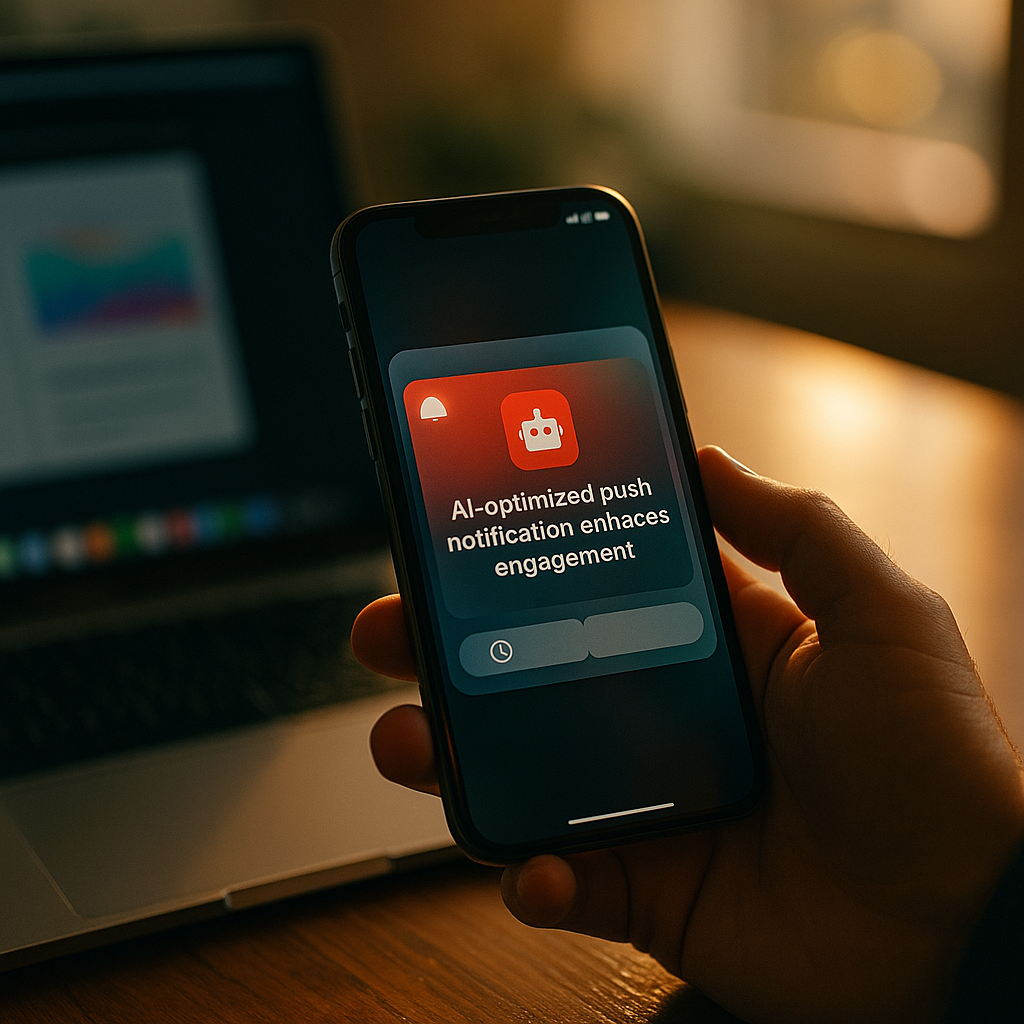Using AI to personalize your push notification timing and frequency is revolutionizing mobile marketing in 2025. Businesses that master tailored triggers and optimal cadence see higher engagement, lower opt-outs, and greater customer satisfaction. SMEs and enterprise marketers alike can now deliver smarter, more relevant messages—right at the perfect moment. Discover the keys to unlocking AI-powered notification success below.
AI-Driven Personalization: The Future of Push Notification Strategies
In 2025, personalization goes beyond just content—it extends to push notification timing and frequency optimization as well. Artificial Intelligence, or AI, has matured to analyze user data from multiple channels, allowing brands to understand exactly when and how often to engage their audience. Companies using AI-driven personalization are reporting CTR boosts of up to 45% compared to manual or generic approaches. The shift to AI-based scheduling signals a new era where relevance and efficiency drive results.
How AI Determines the Best Time to Send Push Notifications
Timing is everything in mobile engagement. AI algorithms process vast amounts of data points—such as past interaction history, time zone, app usage patterns, and even device activity—to forecast when a user is most likely to open and act on a notification. This predictive modeling leverages machine learning, enabling businesses to send notifications at moments of peak attention rather than relying on guesswork or fixed schedules.
- User Behavior Analysis: AI spotlights the unique rhythm of each user, identifying individual windows of engagement effectiveness.
- Real-Time Adjustments: Adaptive systems adjust timing in real time based on evolving user habits.
- Demographic & Geolocation Data: Personalization extends to account for regional holidays, events, and local time differences for global audiences.
Leading apps reported that AI-optimized sending times can increase notification open rates by as much as 63%, according to industry data published in late 2024.
Optimizing Notification Frequency with Machine Learning
Oversending notifications risks overwhelming users, causing opt-outs and damaging brand trust. With machine learning in push notification management, AI can monitor user fatigue and engagement decline, dynamically adjusting your campaign’s frequency.
- Frequency Capping: AI sets and revises frequency limits for each user, ensuring messages don’t become intrusive.
- Lifecycle Stages: AI detects where users are on their journey (onboarding, active, lapsing) and tailors notification frequency accordingly.
- Feedback-Driven Updates: Negative cues—like ignored notifications or app uninstalls—trigger AI to further reduce or pause messaging for specific users.
This intelligent moderation protects workforce resources and fosters long-term engagement and retention, key metrics cited by brand managers in recent market research.
Benefits for User Experience and Business Outcomes
Delivering relevant, timely notifications transforms user experience. When AI personalizes timing and frequency, users feel that brands understand and respect their preferences—leading to higher satisfaction and loyalty. For businesses, AI-powered notification strategies drive measurable improvements:
- Higher Retention: Engaged users are 70% more likely to remain active in apps with optimized notification cadences.
- Lower Churn: Reduced opt-out rates protect your marketing investments and user base.
- Increased Revenue: Timely notifications prompt purchases, event registrations, and other conversions, increasing ROI.
AI enables true customer-centric messaging, strengthening reputation and differentiating your brand in crowded app marketplaces.
Implementing AI-Powered Notification Timing and Frequency: Steps for Success
Launching AI-powered push notification campaigns can seem daunting, but current technologies make it accessible. Here are actionable steps:
- Integrate Analytics: Ensure your app collects granular user data (usage sessions, interaction timestamps, etc).
- Select an AI Platform: Choose a push notification platform with robust, transparent AI/ML algorithms and proven results.
- Define Business Objectives: Align notification goals (engagement, retention, sales) with your personalization strategy.
- Test and Optimize: Leverage A/B and multivariate testing to compare AI-driven vs conventional approaches; refine regularly.
- Respect User Preferences: Always provide clear opt-in/opt-out controls and transparency about how user data informs messaging timing and frequency.
Strong implementation builds trust—an essential element of Google’s E-E-A-T (Experience, Expertise, Authoritativeness, and Trustworthiness) standards for effective, ethical AI use.
Challenges and Future Trends in AI Personalization for Notifications
Using AI for personalized push messaging is not without hurdles. Privacy regulations are becoming stricter, requiring brands to enhance data transparency and security. Some users are wary of AI-based decisions, making consent and education vital. In the future, expect hyper-contextual triggers: AI will combine real-world signals—weather, location, recent activity—for even more refined engagement. Advances in explainable AI will make it easier to understand and justify automated decisions, further improving user trust and message performance.
FAQs: Personalizing Push Notification Timing and Frequency with AI
- How does AI personalize notification timing?
AI analyzes user activity patterns—such as app usage, previous responses, and location—to predict optimal times for each user, improving open and engagement rates. - Can AI help prevent users from unsubscribing?
Yes. By optimizing frequency and respecting individual preferences, AI reduces notification fatigue, leading to fewer opt-outs and app uninstalls. - Is it difficult to implement AI for push notifications?
Most modern push notification platforms now offer built-in AI/ML features, allowing marketers to deploy AI-driven personalization without custom development resources. - Will users know their notifications are personalized by AI?
While users may not know the details, transparent privacy policies and in-app education about personalization help build trust and comfort. - Can AI adapt to changes in user behavior over time?
Absolutely. AI systems continually learn from new data, ensuring timing and frequency remain relevant as user habits evolve.
To summarize, using AI to personalize your push notification timing and frequency delivers smarter engagement and greater ROI in 2025. Leverage these advanced tools to meet user needs, respect privacy, and outperform your competition with every message you send.
